
Content marketing is a way to promote your business or brand by creating new or existing content. It’s easier than ever for small businesses to create content, but the challenge remains in getting that content in front of potential customers. In this article, we’ll discuss what is content marketing and how you can use it to boost sales, build your brand exposure, and even drive traffic back to your website or blog.
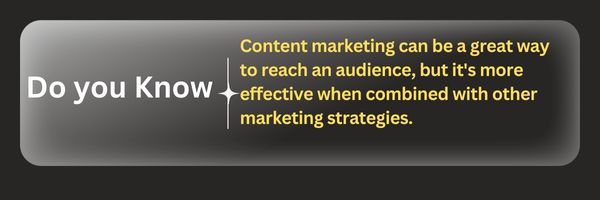
Types of content marketing
Content marketing is much more than blog posts and social media updates. You can use it to reach new audiences, engage existing customers, and build a strong brand. In this section, we’ll look at the different types of content marketing and how they can help you grow your business.
1. Blog posts
Blog posts are a great way to attract new customers, build trust with your audience and educate them. For example, if you’re a restaurant owner who wants to increase sales, one of the best things you can do is write an article about how to pick juice at restaurants (and then link back to your website).
Writing blog posts will help you connect with influencers in your industry who are willing to collaborate on something else later down the road. In fact, many businesses have built entire careers around effective content marketing strategies such as guest posting on other blogs or creating e-books.
2. Videos
Videos are a great way to engage your audience and explain complex ideas. They can also be used to showcase products or explain how they work. Videos can be used to show how to solve problems or showcase the people behind the brand.
3. Infographics
Infographics are visual representations of information and data. They’re an ideal format for explaining complex concepts in an easy-to-understand way or for illustrating a point with lots of data points.
For example, you might create an infographic that shows how many hours Americans spend on their smartphones each day (the answer is 3 hours). Or maybe you want to share some fun facts about cats? Infographics can help with that too!
4. Quizzes and surveys
Quizzes and surveys are great ways to gather data about your audience. You can use this information to improve your content’s quality and use it as part of a marketing strategy.
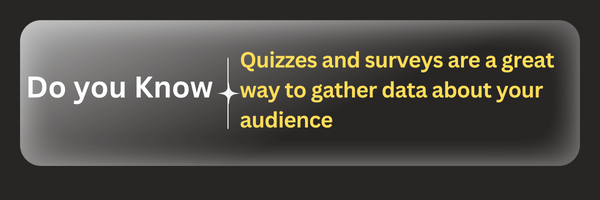
For example, why not send out a survey if you have an email list with thousands of subscribers? This way, you’ll get valuable feedback on what they like or dislike about your business (and even what they want). You could then use this information to create better products or services for them.
5. E-Books or whitepapers

An e-book is a digital book, usually sold online and in PDF format. You can use it to promote your business and build authority by sharing useful information with others in your industry. A whitepaper is an in-depth report, often written by researchers or analysts at a company that has extensively researched a topic related to their industry. It’s similar to an e-book because it helps promote their business–but unlike an e-book, whitepapers are typically distributed for free as part of marketing efforts instead of being sold directly as digital products (although some companies do charge for them).
6. Webinars and webcasts

Webcasts and webinars are live online events that allow you to connect with your audience. They’re similar to live presentations but can be recorded and distributed online for future viewing.
Webinars allow you to broadcast your message through a simple interface that allows viewers to ask questions, participate in polls and surveys, or watch what’s going on without interacting with it directly.
This makes webinars ideal for educating potential customers about your product or service–you can explain what it does in detail while also allowing them to ask questions if they need more information before deciding to buy from you!
You can also use webinars as part of an ongoing series called “webinar workshops” where each session focuses on one topic related directly back to what was covered previously during previous sessions (for example: “How Do I Create Content That Attracts More Customers?” followed by “How Do I Promote My Content Marketing Efforts?”.
7. Social media updates

Without a doubt Social media is a great way to reach your audience, and it’s an easy way to promote new content. One of the best social media updates you can use is an announcement. Announcements are good for new products or services, price changes, and other important information that will help customers decide about buying from you.
You can also use social media updates as calls-to-action (CTAs). CTAs are anything that prompts people in your audience to take some action–like visiting a website or signing up for email updates–, and they’re usually accompanied by an image or video that catches their attention quickly, so they’ll want to click through right away!
8.Email campaigns
Email campaigns are an effective way to promote content, products, services, and events. They can also be used to announce new blog posts or provide subscribers with exclusive deals.
9. Testimonials and Case studies

Testimonials and are two ways to encourage customers to share their experience with your product or service.
Case studies are stories that highlight how your product or service helped someone else, while testimonials show how happy a customer is with your product or service.
Both types of content can be used in many different ways:
- To provide information about the problem being solved by your business, why it’s important for consumers, and who might benefit from it (for example, “Here’s what happened when we used our software”)
- To explain how your company approached solving this problem (for example, “We took these steps”)
- To show what results were achieved by following through with those steps (for example, “This was our outcome”)
There are many different types of content marketing, and you don’t need to do them all. The most important thing is to choose a few that work well with your business and then focus on those until they’re perfected. If you try too many different things at once, it will be hard to keep up with them all–and none will reach their full potential.
How to Creating effective content for your brand

Content is such a buzzword these days. But there’s a reason for that: It works. You may already be creating some content, but are you sure it’s the right kind of content? Are you getting enough engagement with it or not? How much do customers trust your brand? Without an effective content strategy and execution plan, these are just questions you’ll keep asking yourself year after year. The good news is that it doesn’t have to be this way — once you understand what makes effective content work, creating and distributing more of it will become easier than ever before!
Start with your audience.
Before you start creating content, getting a firm grasp on who your audience is important. You need to know their needs, wants, and interests to give them what they want.
You can do this by:
· Understanding the pain points they experience in their day-to-day lives. What are they struggling with? How can your product or service solve those problems?
· Knowing what they read, watch and listen to (and how much time they spend doing each).
This information will help determine where it makes sense for you to create content that speaks directly to these audiences
Being aware of what else people are talking about online right now might help provide some insight into where there may be opportunities for new conversations surrounding current events within society as well as topics related specifically towards industry verticals such as yours.”
Use data to drive content.
Data is the key to creating effective content. It can be used to determine which topics to cover, how best to promote your work, and measure its effectiveness.
It’s also an invaluable tool for determining if your content engages with your audience, providing valuable feedback on what works or doesn’t work with them.
Use visuals and video to connect with customers.
You’ve heard it before, but visuals are just more engaging. They’re the best way to connect with people on social media and in your content. Use photos and videos of your product or service in action and pictures from behind the scenes at work events or parties you throw.
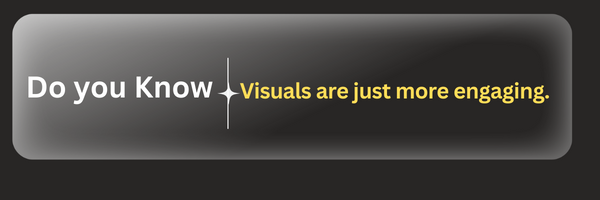
Videos are also a great way to connect with customers–especially on Facebook Live! If you’re not already live-streaming video content regularly, give it a try!
Simplify the process for writers and creators.
One way to simplify the process is by using templates. Templates are a great way for writers and creators to create content quickly without having to start from scratch every time. They allow you to be more consistent in your messaging, brand voice, culture, and values across your channels.
However, you should make sure that your template is easy-to-use so that people can handle it when they’re trying to use it or edit it on their own (especially if they’re not technical).
Make sure you’re leveraging existing tools and technologies that work with your brand’s voice, culture, and values.
You need to make sure you’re leveraging existing tools and technologies that work with your brand’s voice, culture, and values.
A good content strategy helps you understand your audience and what they want from your brand. It also helps you create content that is relevant to them. A solid plan gives you the opportunity to increase visibility in search engines and social media platforms like Facebook or Twitter, which can lead to more traffic on your site–and, ultimately, more sales!
How to Writing effective content for different platforms
Writing for the web, social media, and apps are different skill sets. Here we discuss some tips for how to write effective content for different platforms:
Online writing for SEO
Your keyword is the word or phrase that you want to be found on search engines.
Use keywords in your text:
- Your keyword is the word or phrase you want to be found on search engines. You can use it once or a few times in your content, but don’t overdo it! You want the reader to find what they are looking for without having to scroll through pages of text just because there was one word repeated too many times.
Make sure your text is readable:
This means that you should avoid using too many abbreviations, slang terms, and acronyms (like LOL). It also means making sure there aren’t any grammatical errors in your writing as well as avoiding typos at all costs! If someone finds out about these things from reading your blog post, then they will probably not come back again because no one likes reading something with mistakes in it!
Writing for social media
Social media is an important part of your marketing strategy, but it can be hard to know where and how to start. Here are some tips for writing effective content that will get you more likes and shares:
- Use the right language and tone. Social media is all about being conversational, so don’t use overly formal language or try too hard to sound smart (unless you’re targeting an academic audience). Instead, focus on being friendly, approachable, and relatable–just like your customers would want!
- Use hashtags, emojis, and links. Hashtags make it easier for people who want more information about the topic at hand or are interested in similar topics to find your post through search engines like Google or Twitter’s own search function. Emojis add character while helping readers understand what emotions they should feel after reading something (eek!). Links allow readers who want more information about a product/service mentioned in one of your posts directly from their feed without leaving Facebook Messenger, etcetera…
Write for the web
When you’re writing for the web, keep your sentences short and paragraphs short. You can use bullet points if you need to break up text into smaller chunks. Use subheadings and lists throughout your article, so readers know what’s coming next.
Use boldface or italics to emphasize key points (you can even combine these two!) in your articles. And don’t forget about images–they’re great for breaking up the text on the screen!
Writing for mobile apps
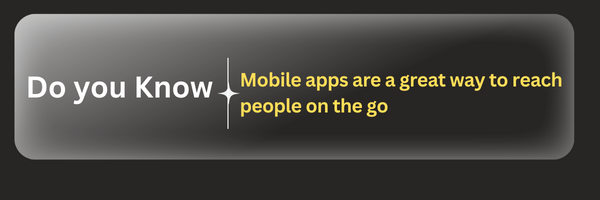
Mobile apps are a great way to reach people on the go, but you need to make sure that your content is easy for them to access. Here are some tips for writing effective content for mobile apps:
Make sure it’s short and sweet.
Mobile users have a limited attention span and don’t want to scroll through long paragraphs of text in order to get their information. Keep things short and sweet by using bullet points, subheadings, and short paragraphs so they can easily scan the information.
Include images and videos if possible–and even hyperlinks connecting related content if applicable!
This will help readers feel like there’s more value in what you have written than just words on a page; this will also encourage them not only to come back again later but also share these posts with others via social media networks like Facebook or Twitter which may lead even more readers towards this piece over time as well!
Tips for creating high-quality content
Creating high-quality content for your blog or website can be difficult, especially if you’re just starting. However, you can take some simple steps to ensure that your writing is top-notch from the beginning.
Focus on something that you’re passionate about.
If you’re not passionate about your topic, it’s probably not worth writing about. If you don’t care about the subject matter, why would anyone else? Your writing will be dull and uninspired–and no one wants to read that kind of content.
You should also ensure that whatever gets you excited about your topic aligns with what the audience wants or needs from their reading experience. For example, suppose I’m writing about how to create high-quality content for a blog post on my website (which I am). In that case, I know my readers are looking for tips on how they can improve their writing skills as well as find new ways to engage their readers online through social media channels like Facebook or Twitter.
Make sure the content is valuable to readers.
There are two main reasons to create content:
- To make money.
- To be a thought leader in your industry.
If you’re trying to make money, then it’s important that the content offers value for readers and doesn’t just push products or services on them. If you’re trying to be a thought leader, then you need to focus on creating quality content that helps people solve problems in their lives with information that can be applied directly (and easily) by those who read it.
Remember social media!
Social media is a great way to connect with your audience. It’s also a wonderful way to get noticed by people who are interested in what you have to say.
Use hashtags on Twitter, Instagram, and Facebook so that your posts can be found easily by other users searching for relevant topics.
Make sure that the social media platform(s) that you use matches the type of content you create: if it’s funny or quirky, then Instagram might be best; if it’s educational and informative, then LinkedIn could be ideal; if it deals with current events or newsworthy topics (and has lots of images), Twitter would work well too! If there are multiple options available, then try them all out (and see which one works best) before making any decisions about where exactly your business should focus its efforts towards creating quality content regularly – this way, there won’t ever be any doubt whether or not people will want read/watch/listen, etc…
Make sure your content is optimized for search engines.
When creating content, it’s important to keep the search engines in mind. Search engine optimization (SEO) is a strategy that helps websites increase their visibility and traffic from search engines like Google.
To optimize your page for search engines:
- Use keywords throughout your content. Keywords are words or phrases people type into Google when looking for something specific on the web–like “how do I grow tomatoes?” For example: “How To Grow Tomatoes In Your Backyard” would be an excellent title because it includes gardening and tomatoes and advice on growing them at home! You can also include these terms in subheadings of each section, so they appear bolded onscreen when people visit your site through a link or share it via social media platforms like Facebook Messenger or Twitter direct message feature (DM).
Use photos and graphics to make your content more appealing.
Another good way to make your content more appealing is by using photos and graphics. Research has shown that images help readers retain information better than plain text. Images can also be used to illustrate points you’re making, break up large blocks of text, or add interest and variety to a page.
But beware: not all images are created equal! If you use an image that doesn’t match up with what you’re writing about (for example, if someone wrote about how they felt after losing their job but used an image of someone laughing), readers will get confused and may not take your article seriously anymore because now it looks weird or silly instead of professional-looking as before–and who wants their articles/blogs/websites looked down upon by others?
Creating high-quality content requires a lot of work, but it can be rewarding in the end.
It’s important to remember that creating high-quality content requires a lot of work. You can’t just write something and expect it to be good, especially if you’re writing about a topic that’s new to you. If you want to create great content, make sure that:
- You enjoy what you’re writing about! If this isn’t something that interests or excites you, it will show in the end product.
- You do extensive research on your topic beforehand so that everything is accurate and up-to-date with current events/information. This will help readers trust what they read from start to finish (and maybe even come back again).
- Proofreading and editing are an essential part of every writer’s process–but even more so when working on longer pieces like articles or books because there are often many different sources used throughout these projects which could lead to mistakes if not checked carefully enough beforehand before publishing them online for people worldwide.
How to Repurposing & optimizing existing content
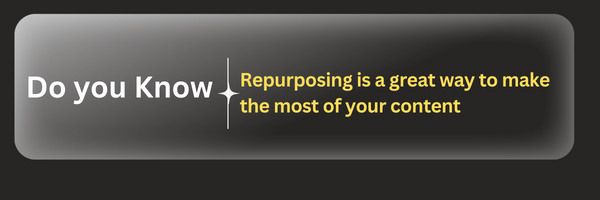
Repurposing is a great way to make the most of your content. It’s a simple tactic to help you reach more people and spread your ideas without writing new blog posts.
What is Repurposing?
Repurposing is taking an existing piece of content and reusing it in a different format.
For example, you have a blog post that you’ve written about how to get more followers on Instagram. In that case, you could repurpose that same information into an e-book or even a short video tutorial. The more formats your audience can consume your content in, the better chance they have of finding it useful!
Why does it matter?
Reusing content is a great way to get more traffic, save time and money, increase brand awareness, and increase search engine rankings.
- Traffic: You can reuse old posts by publishing them on new channels like LinkedIn or Medium. This will help you get more readers who might have yet to see the original post.
- Time: It takes less time to create one piece of content than it does to create ten different pieces of content because all you have to do is change the title and maybe add some new images if necessary (if this sounds like too much work for you then I suggest hiring someone else).
The bottom line is that reusing existing material saves both money AND effort, which means there’s nothing wrong with doing so as long as other factors aren’t involved, such as plagiarism, etc…
How to repurpose existing content.
- Use social media. Social media is a great way to repurpose existing content and make it more engaging for your audience. For example, you could create a Facebook Live video or Instagram story of the same topic as an article you wrote on your blog or landing page, then share it across all of your social platforms.
- Use email marketing campaigns (eDM). If you have an eDM list that isn’t currently being used for anything else in particular, why not send out some new emails with old content? This can help boost traffic back to older pieces of content that might otherwise be overlooked by users who only visit when they need something specific answered right now–and sometimes those answers are only found within previous posts!
- Blog about topics related directly back into existing articles/pages via blog posts that link back up top where needed before diving into new material below them, so readers know exactly where everything came from originally without having left their current point-of-view at all times throughout their journey through our site experience.”
You can maximize the value of your content by repurposing it.
One of the best ways to increase the value of your content is by repurposing it. This can be done in many different ways, but here are some examples:
- Create new content from the old (e.g., a blog post can become a video).
- Make it more useful (e.g., turn an article into an e-book or whitepaper).
- Make it more accessible (e.g., turn an article into an infographic).
- Make it more relevant (e.g., turn a piece of historical information into something current).
·So, in short, repurposing is a great way to optimize the value of your content. It can help you reach new audiences and generate more leads and sales by repackaging your content for different formats, like podcasts or blog posts.
How to Leveraging visuals and multimedia in content marketing

If you’re looking for a way to increase your sales and engagement, then it’s time to add visuals to your content marketing strategy. Visuals are an increasingly important part of the internet; according to VisionCritical, 64% of consumers prefer visual content over text.
Visuals are a great way to attract visitors.
- These are a great way to attract visitors.
- More likely to be shared on social media, which can help your content go viral and reach more people.
- Visually appealing content is also easier for readers to understand and consume than text-only material, so it’s more likely that they’ll get what you’re saying right away.
Visually appealing content makes your audience happier.
Content with visuals is more likely to be shared, which will generate more traffic for you.
Visuals, like photos and illustrations, are more engaging than text. They make your content more memorable and accessible to people with disabilities. Visuals also make it fun to read!
In short: visually appealing content helps you stand out in a crowded marketplace.
Visually appealing content is easier to understand and consume.
Visuals are a great way to make complex topics easier to understand. They can help people remember and understand the content, especially when they’re used in conjunction with the text.
Visuals can also be useful for explaining a concept, demonstrating a concept and/or process, or adding an element of fun and creativity to your content.
Using visuals in your content helps you get more attention, engagement, and sharing from your audience, which can lead to increased sales.
Visuals are an important part of content marketing. it can help you get more attention, engagement, and sharing from your audience, which can lead to increased sales.
Visuals are more likely to be shared than text-only posts. A study by BuzzSumo found that posts with images receive 2x more shares on average than those without images. According to Social Media Examiner’s 2018 Social Media Industry Report, visual content is growing at a rate of 7 times faster than text-based content! In fact, 82% of marketers say they plan on incorporating more visuals into their campaigns this year compared to last year ( HubSpot ).
If you want people who see your post on social media or in email inboxes (or anywhere else) not just read it but also understand what it means, then adding visuals is critical! Visuals make complex ideas easier for our brains as well as other people’s brains–they’re faster for us all around because we don’t have time waste trying to figure out what something means when there are already clear pictures doing all the work for us 🙂
How to Measuring the success of your content marketing efforts

However, there are many different ways to measure the success of your content marketing efforts — and while there’s no one-size-fits-all approach to success, there are some basic metrics that most organizations can use as indicators for what works best for them.
How do you measure the success of your content marketing?
So, what is the definition of success?
The answer to this question depends on your goals and objectives as a company. If you’re looking for more leads and conversions, then measuring your content marketing efforts by those metrics may be ideal. However, if one of your main goals is brand awareness or building trust with customers, then other metrics might be better suited for measuring success–for example:
- How many shares does each piece receive?
- What’s the average time spent on each page?
- How many people are commenting or liking posts (and what kinds)?
What is the definition of success?
- For your organization, what does success look like?
- For your content marketing efforts, what does success feel like?
- How will you know when you have achieved success?
Which metrics should you use to assess your content marketing efforts?
There are a number of metrics you can use to assess your content marketing efforts. These include:
- Views – the number of times your content has been viewed, either in total or by individual users. This is one of the most basic and important metrics for measuring success because it indicates how many people have seen what you’ve created.
- Shares – how often people share or link to your content on social media or other platforms like email newsletters and blogs (this also includes reposts). Sharing shows that they think it’s worth sharing with others too!
- Likes – whether someone has liked what they’ve seen on Facebook, Twitter, etc., which could be an indication that they approve of what you’re doing (or want their friends/followers/fans/peers to know about it). It’s worth noting, though, that while likes can be useful as part of an overall strategy for measuring success, they shouldn’t be used as standalone metrics because some audiences prefer not to use them at all.
What are some examples of content marketing success?
- Increased brand awareness
- Increased sales
- Increased conversion rates
- Increased customer satisfaction
How can you ensure that your content marketing efforts have a positive impact on your company?
- Make sure your content is relevant to your audience
- Use analytics to measure how your content is performing
- Make sure your content is easy to find
- Use social media to promote your content
As you can see, there are many different ways to measure the success of your content marketing efforts. The metric that is most important to you will depend on the goals of your campaign and how it fits into your overall strategy.
- If one goal is to increase brand awareness, then measuring impressions, shares, and engagement would be important metrics for success.
- If another goal is customer acquisition or lead generation (or both), then clicks may be more significant than shares or comments; however, these can all be used as indicators of whether customers have engaged with the content enough for them to follow through with an action such as purchasing something from you or filling out a contact form so that someone from marketing gets back in touch later on down the road when they’re ready to buy something from you!
Content marketing is a powerful tool for building relationships with customers, but it’s not always easy to measure its success. It’s important that you understand what success means for your company and use the right metrics for measuring it. If you want to increase sales or customer loyalty, then look at engagement metrics like time spent on the site or shares from social media. On the other hand, if visibility is more important than conversions, then look at things like mentions in news stories or blog posts by competitors who reference their content
Strategies for growing your audience and engagement
Every marketer wants their audience to grow. What’s more, you want to grow your audience without spending a lot of money or relying on outside sources to get you there. So how do you do it?
Make sure you have a well-structured audience
- Know who your audience is: What do they care about? What do they need help with? Are there specific groups within the larger group that have different needs or interests, such as men vs. women, parents vs. non-parents, or millennials vs. baby boomers?
- Know how they want to see it: Do people prefer reading text on a page or watching videos on YouTube? Do they want articles in long form with lots of detail versus quick summaries in bullet points (or some combination thereof)?
- Know how they want to interact with it: It would be better if we gave them opportunities to engage directly via comments sections on our site rather than just linking off elsewhere when we publish new content (e.g., Twitter). If so, then we should make sure those sections work well before launching them live!
Use different media formats to reach different audiences
You can use different formats to reach different audiences.
For example, Instagram is best for images and videos, Facebook is great for longer posts that include text and links, and Twitter is great for short messages (tweets).
Create content that people actually want
- Create content that people actually want.
- Content that is useful, entertaining, or inspiring.
- Relevant to your audience.
- Consistent with your brand image and voice (if you’re using one).
Offer real value in exchange for their attention and engagement
In order to grow your audience and engagement, you need to offer real value in exchange for their attention and engagement.
You can do this by giving people something of value in return for their attention:
- Make sure it’s something that is relevant to them. If it isn’t, they won’t care about it and won’t share it with others (or even click on it).
- Make sure the content is easy-to-share–in other words, make sharing as simple as possible by including share buttons at the top of every post or page on your site (and make sure those buttons link directly back to social media profiles).
Solve problems that your audience has, and make it easy for them to share what you’ve created.
If you want to grow your audience and engagement, you have to solve problems that your audience has. You also have to make it easy for them to share what you’ve created.
- Be specific about the problems you are solving. If someone is struggling with an issue, they’re going to be much more likely to pay attention when someone offers a solution than if they hear general advice about how other people might be able to help them out in some way (even though this kind of advice can still be useful).
- Give people a way of sharing the content that solves their problem–and make it easy! If someone finds something helpful but needs to know how best-suited others would find it as well, then there’s no point in publishing it at all; there’s no sense in wasting time making something nobody will see or use because there needs to be more promotion beforehand.
There’s more than one way to grow your audience.
The first step in growing your audience is understanding what makes an audience grow. There’s more than one way to do this, and it’s not just about the number of followers you have.
It helps to think about what your audience wants from you and give it to them. Be authentic, transparent, and consistent in your approach; be patient with results; don’t be afraid to try new things!
You need to think about what works best for your business and what your goals are before deciding on an approach because it could take some time before any of these strategies pay off! But if you follow these steps diligently and keep working at them over time (with patience), they will certainly pay off in the long run.
Best practices for promoting your content
If you’re like most people, promoting your content can be a real challenge. It’s not that you don’t have great things to say or share; it’s just that there are so many other people out there saying the same thing and competing for attention.
How do you cut through the noise and make sure more people hear about what you’ve written?
Well, my friend, it all starts by getting off your butt!
Use the right tools.
It’s important to use the right tools for promoting your content. Some of the most popular social media platforms include Twitter, Facebook, and LinkedIn. When it comes to using these networks, it’s important that you keep in mind their particular strengths and weaknesses so that you can best leverage them for promoting your content.
For example:
- Use Twitter if you want instant feedback on whether people enjoyed your content – users can quickly reply with either praise or criticism (or both). This allows for immediate interaction between yourself and potential readers/viewers of future videos/articles etc., which makes it easy for them to share their thoughts with others who may also be interested in what they have written about before even getting around to reading all of those lengthy paragraphs!
Do you really need to promote your content?
If you’re a B2B company, content marketing is a way to attract visitors, build trust and authority, and generate leads. If you’re not sure whether or not your business needs a blog or website–or if it has one but isn’t seeing the results it should–ask yourself these questions:
- Do your prospects know who you are?
- What makes your product better than the competition?
- How do people find out about what else is available in this space (including competitors)?
Find influencers and build relationships with them.
Influencers have a large social media following, and they often use their platforms to promote products or services. While there are several ways to find influencers in your industry, one of the best is using tools like BuzzSumo or Followerwonk.
Once you’ve identified potential influencers, send them an email introducing yourself and asking if they’d be interested in learning more about what you do.
Make sure that when reaching out to someone new (especially via email), it’s important to refrain from spamming them with multiple requests at once–and definitely don’t expect them to respond immediately!
Follow up after a couple of weeks; if there’s still no response from this person after several attempts at communication over time (and don’t forget: maybe try sending another personalized message), then consider moving on from this contact point altogether because chances are good that nothing will come from taking things further with someone who doesn’t seem interested in helping promote content related to their field/industry/etcetera anyway.”
Know your audience and create content they’ll love.
Knowing your audience is one of the most important parts of creating content. If you know who they are and what they want, you’ll be able to create content that appeals to them.
To get started with this step, take some time to think about your readers or viewers–who are they?
- What do they like?
- How can you make them feel more connected with your brand?
When answering these questions, remember about Facebook Insights and Google Analytics (or whatever analytics tools are available for your website). These tools will help give insight into who visits each page on your website as well as which posts perform best when shared on social media channels like Facebook and Twitter.
Don’t ignore SEO and social media optimization (SMO).
Search engine optimization (SEO) and social media optimization (SMO) are the two most important aspects of content promotion. If you ignore them, it will be difficult for your content to go viral.
The first step in any successful SEO strategy is creating high-quality content that people will want to share with their friends and family. To do this, you must first create an outline of what you want your article or video to say; then write an introduction paragraph that grabs their attention; add supporting facts throughout the rest of your piece; include a conclusion at the end; proofread everything carefully before publishing it online, so there aren’t any grammar errors or typos — these things can make readers lose interest fast!
Once published on social media sites like Facebook, Twitter & Instagram, etc., post links back onto other sites like LinkedIn, where they’re likely going through different searches related specifically towards topics surrounding business professionals rather than those targeting consumers directly (elevating visibility).
It’s easier than you think to promote effective content
It’s easier than you think to promote effective content. You can do it in many ways and don’t need to be an expert to promote your content.
You can learn how to promote your content by reading articles, watching videos, and taking courses on the subject.
Using social media to promote your content
Social media is an important tool for content marketers. If you’re an entrepreneur, writer, blogger, or anyone else who wants to share their message with the world, social media can help you get the word out about your work. However, it’s important to remember that every platform has their own rules and guidelines on what types of content they allow—and what types they don’t.
Share the right content
- Share the right content.
- If you’re sharing content on Facebook, it’s important to know what your audience is interested in and when they’re most likely to be online. This can help you decide which types of posts are appropriate for sharing at different times of day, week, or year. For example:
- If your audience is mostly women between 18-40 years old who live in the US, then consider sharing something related to politics during election season (which is prime time for political news).
- If they live in California and love hiking, then share photos from nearby national parks during summertime (when people are more likely to hit up these parks).
Use hashtags to your advantage.
Hashtags are a way to get your content noticed by people who are interested in the same thing. It’s like having a conversation with other people who have similar interests, even if they’re not friends or followers of yours.
Use hashtags that are relevant to your content, such as:
- The name of your blog post (e.g., #howtofindyourdreamjob)
- The topic of your blog post (e.g., #socialmedia)
Build your Twitter bio.
Your Twitter bio is a great place to promote your content. It’s also one of the most important elements of your Twitter profile, so make sure it’s short and sweet!
Use keywords in your bio that people interested in what you offer would search for on Google, like “coaching” or “motivational speaker.” This will help them find you when they’re looking for answers to their problems.
Make sure that the description is personal; don’t use generic phrases like “I’m a blogger who loves writing about…” because these are boring and won’t make anyone want to follow you. Instead, tell everyone something interesting about yourself (for example, I’m an award-winning entrepreneur who travels around Europe). You can also include any relevant hashtags here, such as #bloggerlife or #entrepreneurship – this way, users searching those topics will find out more about what kind of content has been posted by other users before deciding whether or not they’d like anything similar themselves!
Build your Facebook bio.
The first thing you should do is build your Facebook bio. This is a great way to encourage people who like your page to follow you on other social media platforms, and it’s also an opportunity for them to learn more about what you do and why they should care about it.
In order for this strategy to work effectively, however, there are some important things that need to happen:
Make sure your bio is clear and concise
Try to avoid trying too hard or getting overly wordy in describing yourself or what makes you special. The goal here isn’t just getting clicks–it’s actually engaging with others who may be interested in what they see as well! You want them to come back again once they’ve read everything available on their first visit, so make sure there’s nothing holding them back from doing so (ease of reading being one example). This means avoiding long-winded sentences filled with unnecessary jargon; instead, focus on using simple language when possible (but don’t sacrifice quality either).
Make sure you’re using the right social media site for your audience.
- Make sure you’re using the right social media site for your audience.
- If you’re a travel blogger, it might be better to promote your content on Instagram than on Twitter or Facebook.
- If you have a large following of 20-somethings interested in fashion and entertainment, then Snapchat may be where they hang out most often.
Social media can help promote your content.
Social media is a great way to promote your content. It can help you reach new audiences and existing audiences, as well as build relationships with them.
Here are five ways that social media can help you promote your content:
- Social media allows you to target specific groups of people who may be interested in what you’re doing or selling. For example, if I’m writing about marketing tips for small businesses on my blog, I can use Twitter or Facebook ads (or both) to target people who have visited my site before; this way, I’m only reaching out directly towards those most likely interested in my product!
- Social media also allows for more personal interaction between the creator/company and its consumer base than traditional marketing methods do–people feel more connected when they see themselves reflected back through their favorite celebrities’ posts on Instagram or Snapchat stories!
Social media is a great way to promote your content. It’s important to remember that not all social media sites are created equal, and you should choose the ones that best fit your audience.
You can use content to drive traffic from other websites and blogs back to your own website or blog.
Benefits of content Marketing
Reach your target audience
Content marketing is a great way to reach an audience. You can choose to target a specific demographic, like people who are interested in a certain topic, or you may decide that geographical location is more important than anything else. For example, if your business sells pet products, it would make sense for you to focus on pet owners who live in areas with lots of pets (like cities).
Gain credibility
You know that feeling when you’re in a store, and the salesperson is trying to get you to buy something? It’s not a good one. You feel pressured and uncomfortable like they’re trying too hard to sell you something–and it turns out that’s exactly what they’re doing!
If your content marketing strategy involves being pushy or overly aggressive with your audience, then you’ll probably have the same kind of reaction from them: resistance and distrust. But if instead of pushing your products and services on people, you give them quality information about those things in exchange for their attention (and maybe even their money), then there’s no reason for anyone involved not to benefit from this transaction.
A better understanding of customer needs and wants
Content marketing is a great tool for understanding your customers. It can help you learn what they like and don’t like, what their needs are, and what their pain points are. This information can be used to create better products or services that address those needs and pains.
Boost SEO ranking
SEO is a long-term strategy for the content you create, not just the keywords you choose. You can’t just slap keywords on your website and expect it to rank well in search engines.
You need to create quality content that users want to share with their friends and colleagues because it provides value for them. This is what Google wants from you: good content that people will want to read or watch!
Content marketing can be a great way to reach an audience, but it’s more effective with other marketing strategies.
Content marketing is not a stand-alone strategy. It’s great for reaching an audience but more effective with other marketing strategies.
For example, if you’re running a blog about hiking and camping gear, you might want to work with bloggers who write about the same topics as you do (like backpacking). They may have a bigger following than you, so they can share your content with their followers and help spread the word about what you’re doing!
Improves brand awareness
Content marketing is a great way to build brand awareness for your business. Content marketing builds customer trust by helping them understand what makes your business different from others in the industry and why they should choose you over someone else. It also helps build credibility through regularly publishing valuable information on topics relevant to your audience, which helps establish an authority position for yourself in their eyes.
Connects with customers
Content marketing builds relationships with customers. One of the biggest benefits of content marketing is that it helps you build a relationship with your audience. Customers want to feel like they are part of a community, and content marketing helps them do that. In fact, according to research from HubSpot, 57% of buyers say that brands who create useful content are more trustworthy than those who don’t; this number jumps to 65% when it comes to B2B companies specifically!
Creates a better customer experience
Content marketing can help you create a better customer experience. When you’re providing information that helps customers find answers to their questions, products, and services they need, or confidence in your business, it makes them feel comfortable with you.
Builds trust with the audience and community.
When you publish content, you are building trust with your audience, community, and influencers.
Content marketing builds trust between your company and the audience by demonstrating expertise in a particular field or industry. It also helps establish credibility for your brand as an expert in that field.
Enhances your reputation as an industry leader.
Content marketing can be used to build trust with your audience, customers, competitors, and industry.
- Content marketing builds trust with your audience by providing them with valuable information that is relevant to their needs.
- Content marketing builds trust with your customers by providing them with the information they need about your products or services in an easy-to-digest format relevant to their business needs.
- Content marketing builds trust with competitors by helping them solve problems or answer questions that they may be struggling with themselves through articles written by experts in the field who share their expertise freely rather than keeping it secret so only those who pay can access it (like some companies do).
This allows everyone involved – including yourself – to benefit from this type of relationship because it means more people will become aware of what each party has to offer without having any hidden agendas behind closed doors which could potentially lead down paths filled with deceitful practices such as lying about product quality levels so that someone would buy something off them instead!
Grows your email list.
One of the most important aspects of content marketing is building your email list. Whether you’re using an opt-in form or an email signup box, having a way for people to subscribe to receive future updates from you will help grow your audience and keep them informed about what’s going on with your business.
It’s also important to note that growing an email list is about more than just getting more subscribers; it’s also about keeping them engaged, so they don’t unsubscribe later on down the line! If someone signs up for one reason but doesn’t see any value from it, then there’s no point in keeping them around anymore–it’ll just be wasted money spent on sending out newsletters (and sometimes even worse: spam).
You can use content to drive traffic from other websites and blogs back to your own website or blog.
This is a great way to drive traffic from other websites and blogs back to your own website or blog.
You can use content marketing as a way to get people talking about you on social media, which will help increase the number of visitors coming through those channels.
You can also use content marketing as part of an SEO strategy that focuses on having more targeted keywords in the body text of the pages on your site, which will increase its visibility in organic search results and bring more traffic into it over time (as well as improve its ranking).
Conclusion
Content marketing is an approach to marketing that focuses on creating and distributing valuable, relevant, and consistent content to attract and retain a clearly defined audience. It’s important to note that the word “content” means much more than just words on a page. It also encompasses images, videos, infographics, and other visual media. The goal of content marketing is to help make customers’ lives easier by providing useful information or resources that will help them solve problems or make better decisions. If you have more questions in your mind about social media marketing, contact us. We would love to help you.


[…] time to develop your content strategy. What kind of content will you include in your emails? Will you use text, images, videos, or a combination of all three? Your content strategy should align with your email […]
[…] writing blog posts can be challenging. It takes time, effort, and skill to create high-quality content that engages readers and generates […]